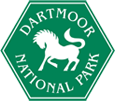Wider Countryside Habitats
These consist of those wildlife habitats which are often widespread within the National Park and located both throughout the KWAs and beyond their boundaries. Because they can form extensive links, many of these features are critical to the maintenance of wildlife habitats and extending their connectivity.
Rivers and other water bodies
Dartmoor is the source of most of Devon’s rivers, which rise within the blanket bogs of the moorland KWA before entering the wooded valleys and rhôs pastures and finally leaving the National Park and flowing on down to the coast. The rivers therefore form the most cohesive system that connects habitats throughout the National Park and improving their quality and that of the associated riparian habitats is of great importance.
There are no naturally occurring lakes on Dartmoor, but there are 8 reservoirs and scattered farm ponds, quarry pools and seasonal pools on open moorland.
Flagship species – Otter; Salmon
Hedgerows, stone walls and road verges
Hedgerows and Devon hedge-banks form the pattern of the farmed landscape that surrounds the moorland and represent an important wildlife habitat in their own right. In some areas, hedges have expanded into scrubby field corners adding further wildlife value. The field boundaries bordering the open moorland tend to be of granite stones which host diverse communities of mosses, lichens and ferns, and shelter for small mammals, nesting birds, and over-wintering amphibians. Road verges can be rich in wildflowers where appropriate management maintains suitable conditions.
Flagship species - Dormouse
Rocky outcrops, quarries and caves
The National Park is of very high geological and geomorphological importance. Some of the structures caused by weathering and human industry have formed a number of habitats that are of value to a wide range of wildlife, including lichens, mosses, invertebrates, bats and birds.
Flagship species – Greater Horseshoe Bat
Descriptions of these habitats: Rocky outcrops, quarries and caves
Other Areas
Areas not earmarked as KWAs may still contain considerable wildlife value in relatively small pockets and should not be overlooked in local conservation proposals. In particular, they may provide good opportunities to enhance wider countryside habitats, local nature reserves, habitat creation and County Wildlife Sites.
